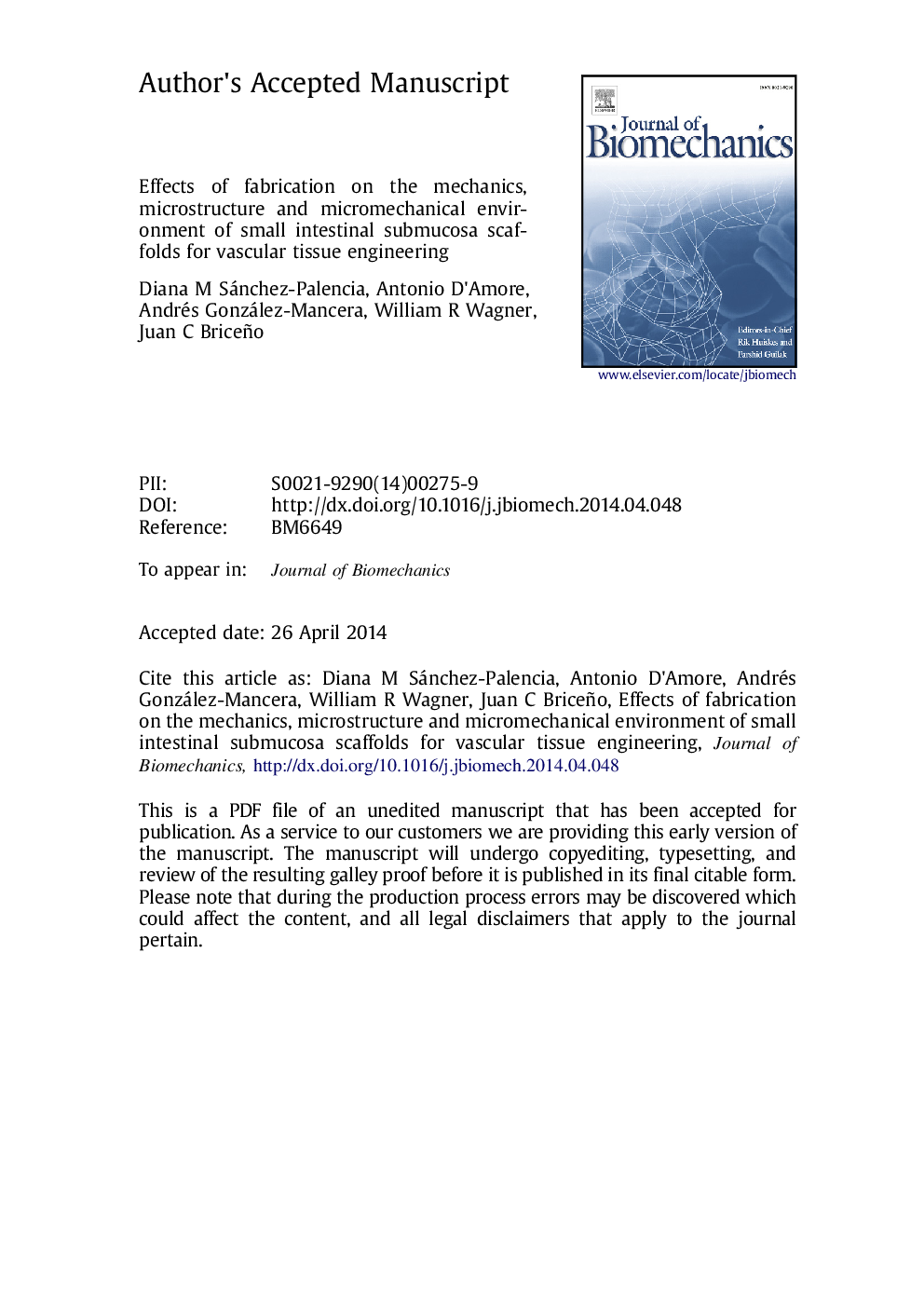| Article ID | Journal | Published Year | Pages | File Type |
|---|---|---|---|---|
| 10431866 | Journal of Biomechanics | 2014 | 31 Pages |
Abstract
In small intestinal submucosa scaffolds for functional tissue engineering, the impact of scaffold fabrication parameters on success rate may be related to the mechanotransductory properties of the final microstructural organization of collagen fibers. We hypothesized that two fabrication parameters, 1) preservation (P) or removal (R) of a dense collagen layer present in SIS and 2) SIS in a final dehydrated (D) or hydrated (H) state, have an effect on scaffold void area, microstructural anisotropy (fiber alignment) and mechanical anisotropy (global mechanical compliance). We further integrated our experimental measurements in a constitutive model to explore final effects on the micromechanical environment inside the scaffold volume. Our results indicated that PH scaffolds might exhibit recurrent and large force fluctuations between layers (up to 195Â pN), while fluctuations in RH scaffolds might be larger (up to 256Â pN) but not as recurrent. In contrast, both PD and RD groups were estimated to produce scarcer and smaller fluctuations (not larger than 50Â pN). We concluded that the hydration parameter strongly affects the micromechanics of SIS and that an adequate choice of fabrication parameters, assisted by the herein developed method, might leverage the use of SIS for functional tissue engineering applications, where forces at the cellular level are of concern in the guidance of new tissue formation.
Related Topics
Physical Sciences and Engineering
Engineering
Biomedical Engineering
Authors
Diana M. Sánchez-Palencia, Antonio D׳Amore, Andrés González-Mancera, William R. Wagner, Juan C. Briceño,
